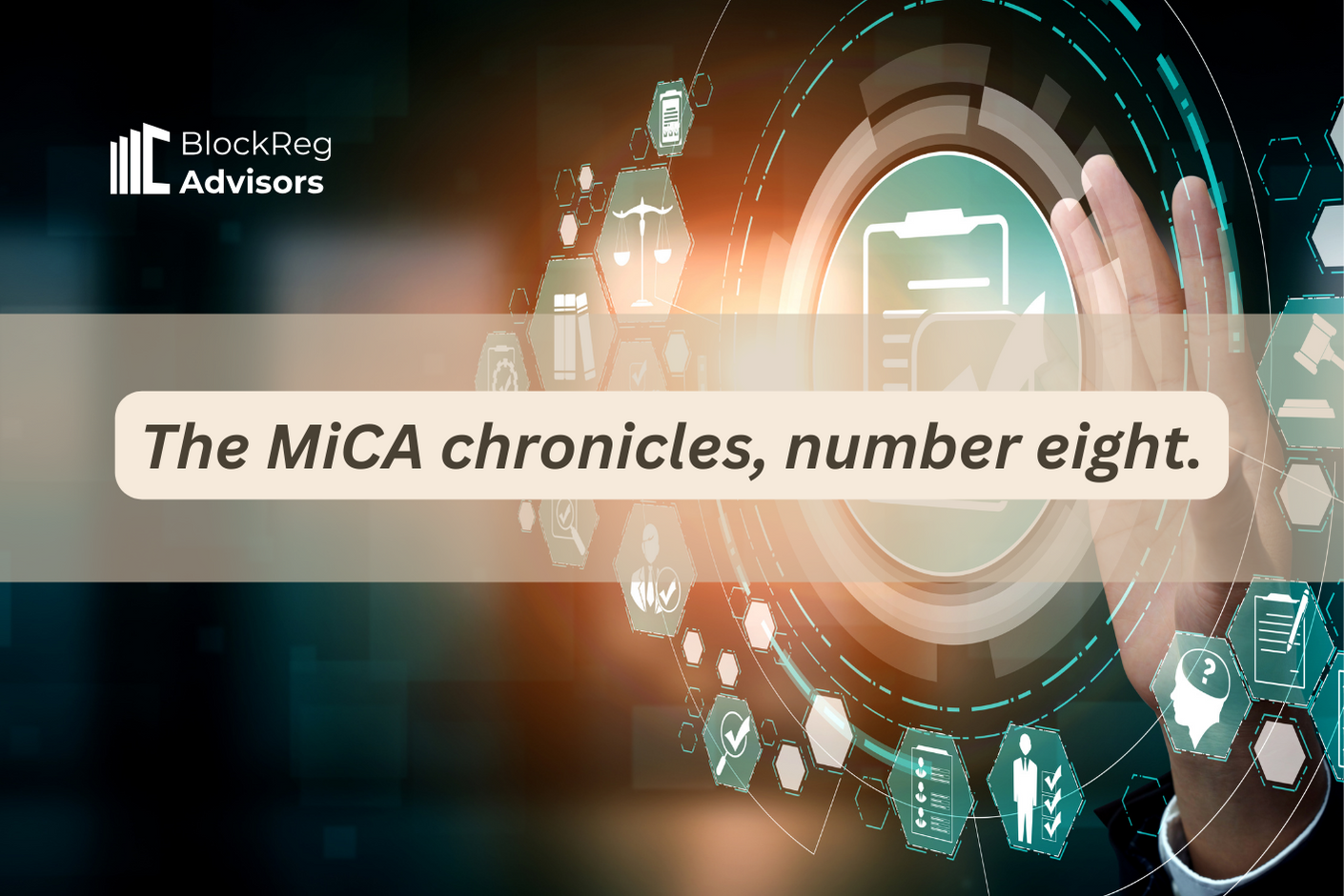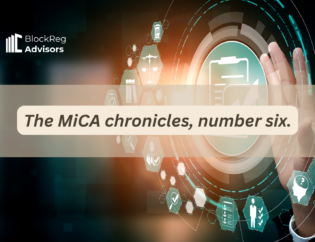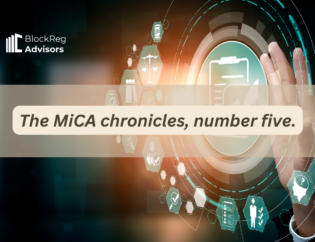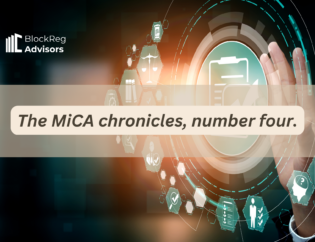
Supervisory colleges, part I:
The licensing principle, authorizations, and being significant.
The goal of MiCA was to establish a regulatory framework for the market of crypto-assets, guaranteeing an appropriate level of consumer protection, business development, and legal certainty. However, and as I have had the opportunity to discuss in these chronicles, it is unclear whether any of these objectives is going to be achieved at all by MiCA, given the many questions its drafting poses.
One of the reasons for being more and more skeptical about MiCA’s success concerns its legal design. With MiCA, EU policymakers decided to undergo an interesting and complex lawmaking experience: to create a new framework that would regulate a market considered (by policymakers, at least) as being somewhat like existing financial markets, but at the same time different from the latter to an important degree, which made it difficult for existing regulations to apply. The choice, then, was to design MiCA by transplanting requirements that were set in other forms of financial regulation (e.g., the electronic money directive, the payments service directive, the market in financial instruments directive…), following as close as possible the logic of “same activity, same principles, same rules”. Such choice denotes an option by EU policymakers to treat crypto businesses as a form of financial business (even if new and with its specificities) and to put them under the same prudential and behavioral normative parameters.
Financial regulation’s focus is on stability. In other words, financial regulation is concerned about the structural “soundness” of financial businesses (liquidity of institutions, governance and internal organization, compliance with applicable laws), as well as with the level of business risk that financial institutions want to incur. Finally, stability concerns the way such entities exercise their business in the market vis-à-vis consumers.
By being under the same regulatory umbrella, crypto businesses, like other financial institutions, will have to comply with risk-management requirements. Most of the level two documents that are now being proposed by the EU’s regulatory authorities are focused on soundness requirements (level of liquidity for asset reference token – ART – issuers, governance structures, AML compliance). I shall look at those in another text, but in this chronicle and the next I would to look into the proposal of draft regulatory technical standards (RTS) for the supervisory colleges.
Supervisory what? So, with MiCA the “licensing” principle – according to which any legal entity purporting to start a business in a specific market must be authorized by a supervisory authority before starting to offer its services – applies to crypto businesses. Any legal entity wishing to exercise an economic activity under MiCA shall have to request a license for becoming a crypto-asset service provider (CASP) and operate in the EU. This license must be requested in the jurisdiction of one EU Member State.
However, MiCA introduces something new to the licensing principle with respect to entities that wish to issue ARTs, e-money tokens, or tokens that are neither of the former nor the latter but that are not excluded from MiCA’s application (general tokens).
In the case of general tokens, entities do not need to be licensed: issuers must only notify the national competent authority (NCA) of the white paper of the crypto asset 20 business days before publication of the white paper to the public. The situation is different for ART issuers (if not covered by article 16(2) of MiCA that establishes just a notification requirement for offers to qualified investors): here, MiCA refers to an authorization. The issuer must be authorized by the NCA to launch the token, and the authorization is per token issued – according to article 18(3), even if the issuer has been authorized to issue an ART in the past, it must submit nonetheless an authorization request. Finally, issuers of EMT tokens must be registered as e-money institutions (they must be licensed as such) and have to notify the white paper of the crypto-asset to the NCA.
Notification of a white paper does not require an ex-ante approval by an NCA. In this sense, both issuers of general tokens and EMTs are subject just to ex post liability if they fail to comply with the legal requirements for publishing a white paper and offer the token to the public. They do not need permission to offer the token to the public, unlike ART issuers, which are subject to a license that authorizes them to issue. Granting of the license takes time, involves the consideration of opinions of EU authorities, and after being granted it can be revoked if certain conditions – just like traditional licenses for provision of financial services.
Why the difference in requirements between these three types of issuers? Well, general tokens are not to be considered as payment instruments nor financial instruments – in fact, it is still unclear what these tokens are, since they represent but a very residual category of tokens, considering the tokens that MiCA excludes from its application (see the MiCA chronicle on tokenization). So, it is safe to assume that policymakers were not very concerned about their “financial risk” to the market and were happy with merely establishing transparency and information duties to the issuers. EMTs, on the other hand, are considered e-money by the EU legislators, and the issuers must be EMIs, so they already have a license in place. Which leaves us with ARTs, that are supposedly payment instruments but not e-money. Therefore, whoever wants to issue them must go through a licensing process and be authorized by an NCA.
Having a license not only certifies you vis-à-vis the market, but also puts you under the scope of supervisory authorities. In fact, once an entity is licensed to do business, it shall be subject to regular controls and contacts with the NCA with respect to its activities, changes in governance structure, amongst other things. EU policymakers did not consider that general token issuers should fall under this strict supervisory apparatus (which is not to say that supervisors do not have powers vis-à-vis general token issuers). As for the rest, by splitting the stablecoin concept into two (a decision that looks stranger by the day), they decided to put part of stablecoin issuers under the EMI framework, while creating a new licensing framework (that is similar to the licensing framework for payment and credit institutions) for the issuers of ART.
(Brief interlude: I am very sceptic that anyone will wish to issue an ART in the EU, given the complexity of the framework and the requirements that it imposes on issuers, but curious to see what the market does when MiCA kicks in.)
So, ok, but supervisory colleges? Yes, for significant ART and EMT issuers. What? You read that right: significant issuers. Are you familiar with the term? If you work with banking regulations, you might: it is a concept established by the single supervisory mechanism (SSM). According to EU regulations, a bank is considered significant if it fulfils one of the following criteria:
- It is sizeable (total value of its assets in excess of 30 billion euros);
- The bank is economically “important” for the country in which it is incorporated or for the EU economy as a whole;
- The total value of the bank’s assets exceeds €5 billion and the ratio of its cross-border assets/liabilities in more than one other participating Member State to its total assets/liabilities is above 20%;
- The bank has requested or received funding from the European Stability Mechanism or the European Financial Stability Facility; or
- It is one of the three most significant banks established in a particular country.
Banks have systemic importance in society, given how central they are for economic activity with the provision of credits and deposit services. The differentiation between significant and non-significant banks exists because of the systemic impact and cross-border coverage of some financial institutions. The consequence is that they are subject to specific regulations and to a different form of supervision, under the SSM. This supervision is exercised not only by the NCA of the bank’s home jurisdiction, but also by the European Central Bank itself, through joint supervisory teams.
MiCA also establishes a differentiation between significant and non-significant issuers with regards to ARTs and EMTs. This classification can be voluntary or not. The criteria to assess if an issuer is significant is laid out in article 43(1) of MiCA, and it is the same criteria for both ART and EMT issuers. Once they are classified as such, issuers will be subject to additional regulatory requirements, but will also be subject to a different type of supervision. Instead of being supervised by their home State’s NCA, they will be subject to the supervision of a supervisory college set up by the European Banking Authority under the terms of article 119(1).
To establish a difference between significant and non-significant entities in a non-banking sector shows the concern by EU policymakers with the systemic importance of some stablecoin issuers and the threats to financial stability that such actors may pose. It is interesting because this is designed taking into account the existence of the SSM in the banking sector, although the system in MiCA seems structurally different. The constitution of supervisory colleges is also something new for entities such as EMIs that will now be under a new level of scrutiny, if they decide to issue tokens and fulfil the significance criteria laid down in MiCA.
In the next chronicle I will be looking into supervisory colleges and the proposed RTSs and consider how they will affect the traditional setting of financial supervision in the EU.
Note: This text is the sole work of the author and does not bind BlockReg Advisors Ltd. nor does it constitute legal advice. All rights reserved.
If you want to discuss these topics further do not hesitate in contacting our team at [email protected] and [email protected].









